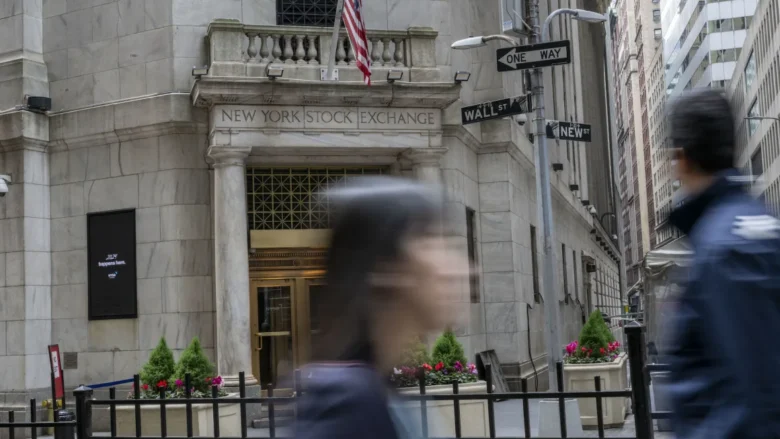Wall Street is looking to corporate earnings to sustain the 2024 stock market rise, with interest rate cuts on hold.
According to a FactSet survey of analysts, S&P 500 businesses’ second-quarter earnings will increase by an average of 8.7% over the previous year. For the benchmark index, that would be the fourth consecutive quarter of annual earnings growth.
The S&P 500 closed this year at historic highs and gained a staggering 16% thanks to strong corporate earnings. This is true even as first-quarter sticky inflation drove interest rate expectations further out of reach. Despite recent data suggesting that inflation is once again declining, the Federal Reserve only scheduled one interest rate reduction for 2024 during its June policy meeting.
While at the beginning of the year investors were anticipating up to six or seven cutbacks, they are now projecting up to three.
Prices are once again on a “disinflationary path,” according to Federal Reserve Chair Jerome Powell, who made this statement on Tuesday at a central bank policy forum in Sintra, Portugal. However, he insisted that before lowering rates, the central bank needs to examine more evidence.
The onus is on solid corporate earnings to keep the market rallying, as the Fed is unlikely to cut rates anytime soon. Since high interest rates raise the cost of borrowing for corporations and boost the appeal of government bonds, which are essentially risk-free, they tend to be negative for equities.
In a report published on Monday, LPL Financial’s chief equities strategist Jeffrey Buchbinder stated, “Earnings growth will be key to holding, or potentially building on these gains.”
The first earnings report of the year is released on July 12 by major banks such as JPMorgan Chase, Wells Fargo, and Citigroup. Investors will be looking for indicators of the consumer’s health. American consumers with lower and moderate incomes appear to be pulling their purse strings, according to recent economic data and retailer warnings.
Due this Friday, the June jobs data will provide investors with information on how strong the labor market is. According to preliminary data released on Tuesday, the number of job postings surprisingly increased to 8.14 million in May, indicating that the labor market is still strong despite extremely high rates.
A large portion of the market’s gains this year have come from the spectacular returns of mega-cap tech stocks, so investors will also be closely monitoring their performance. The market leader Nvidia’s shares are up 159% in 2024, having crossed the $3 trillion mark in market capitalization for the first time in June. Shares of Meta Platforms have surged 44%, and Microsoft has gained 23%. Amazon’s stock has increased by 30% since it entered the $2 trillion club last month.
Wall Street is watching for evidence that the financial sheets of these companies reflect their inflated prices. S&P Dow Jones Indices data shows that the S&P 500’s total return, including dividends, for the first half of the year is 15.3%. The overall return on the index is 10.7% without Nvidia’s gains.
The chief investment officer of Morgan Stanley Wealth Management, Lisa Shalett, stated in a report on Monday that “high valuations will also need to be defended from rising uncertainty around monetary and fiscal policy, domestic and international elections, and geopolitical conflict.”
How the mountains of Nepal inspired Japan to create its newest yen note
On Wednesday, banks all around Japan started to fill their automated teller machines (ATMs) with brand-new yen notes that came from an unexpected source: vivid yellow paperbush shrubs that grow on the rugged Himalayan slopes of Nepal.
According to my coworkers Jessie Yeung, Hanako Montgomery, and Junko Ogura, the yen notes underwent a protracted and intricate trip that involved months of effort and transportation over thousands of kilometers by land and air before reaching the wallets of Japanese consumers.
And by giving money to one of the richest nations in the world, this procedure has given communities in one of the world’s poorest countries a chance to earn a new source of income.
Even though Japan has recently pushed for an increase in digital payments, cash is still the preferred method of payment and it lags behind other Asian nations like China that have virtually abandoned cash.
Tadashi Matsubara, president of Kanpou, the company that makes paper for the Japanese government, stated, “I really think that Nepal contributed to Japan’s economy, as cash is fundamental to the Japanese economy.”
“Japan could not function without Nepal.”
Government bonds issued by China are ablaze. That’s cause for concern in Beijing.
According to my colleague Laura He, money is flooding into Chinese government bonds, driving up their prices and yields to all-time lows as investors seek a safer haven from the nation’s volatile markets and wrecked real estate market.
This week, the yield on China’s onshore 10-year government bond—a benchmark for a broad range of interest rates—touched 2.18%, the lowest level since records have been kept in 2002. Bond rates for 20 and 30 years are likewise close to all-time lows. As prices rise, bond yields—the rewards provided to investors for keeping them—fall.
In an economy that is still recovering from a real estate catastrophe, low consumer spending, and low company confidence, lower borrowing costs should be welcomed. However, the sudden increase in bond prices is igniting speculation of a bubble and producing a great deal of anxiety among Chinese policymakers, who anticipate a calamity like to Silicon Valley Bank’s (SVB) collapse from the previous year.
Since April, the People’s Bank of China (PBOC) has warned more than ten times about the possibility that a bond bubble might burst, causing financial markets to become unstable and stall the uneven recovery of the Chinese economy. It is currently taking an unusual step by borrowing bonds, which it will then sell to lower prices.
At a financial symposium in Shanghai late last month, PBOC Governor Pan Gongsheng stated, “SVB in the United States has taught us that the central bank needs to observe and evaluate the situation of the financial market from a macro-prudential perspective.”



